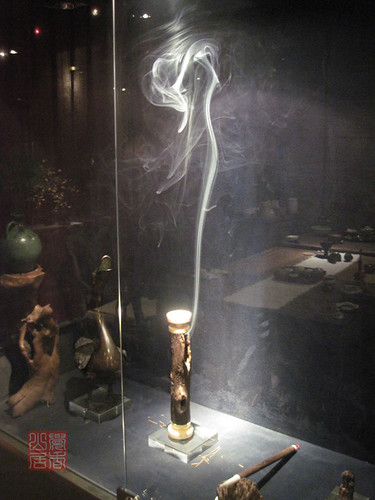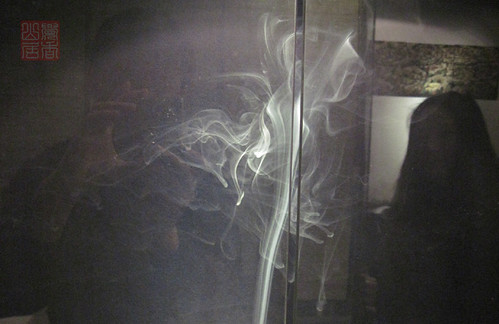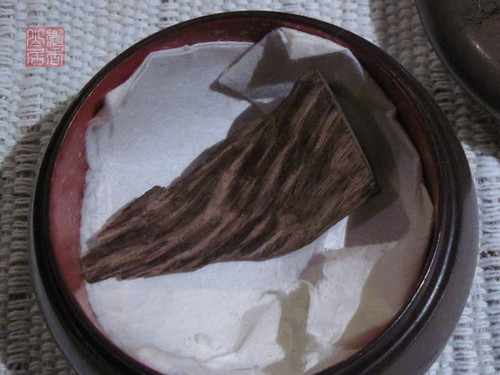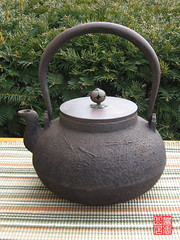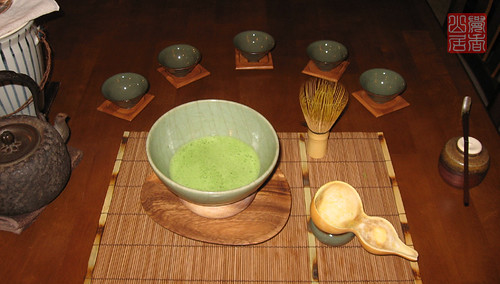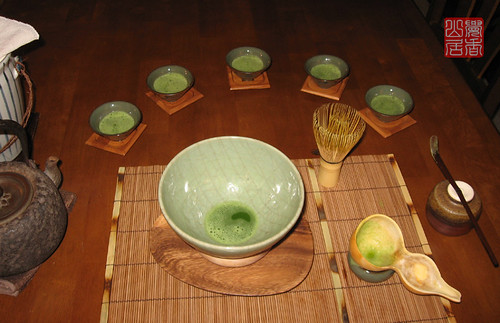
It's been a while I have not reviewed any teas seriously... but this doesn't mean that I'm out of teas. In fact, I keep getting new teas, many of which are gifts from friends, like this one I'm trying today.

This a tea named Fuwei Bai Cha (富伟白茶) or Fuwei White Tea. The word "bai" means white. But, a look on the dry leaves revealed to me the truth that it is actually a type of green tea. And to be specific, it is a type of green tea in the category of chao qing (炒青) or "roasted green" so to speak. You may get confused for why a green tea is named white tea? To decode the "white" part in the name, we have to take a look on what it really means by "white" in the terminology of current industry as well as its historical meaning.
The terminology white used in "white tea" is ambiguous. It refers to two different entities: (1) The color of the tea leaf which is "white" or pale green, or is ivory colored (when the leaf is young) -- this is probably the original meaning; and (2) The "simplicity" in the process of the tea leaves, which means merely letting the leaves wither and then dry and pack them up.
In today's tea industry in China, among the five types of tea named by colors [1], it is in the second sense mentioned above that the White Tea is definied. An example of White Tea in this system is Bai Mu Dan (白牡丹) or White Peony.
In the ancient time (especially in Tang and Song Dynasties), White Tea is definied differently from that of the modern tea industry. It is more straight forward referring to the color of the leaves, and has nothing to do with the processing method. A tree that grow "white" colored leaves is considered a specialty. The taste of the tea made out of the white tea tree is said to be supreme [2]. In the ancient time, the procedures in tea manufactury is way more complicated than today's.
Back to today's tea. I did a small online research and found out that this tea is in one of the series of new products developed in the last couple of years, noticeably all from the west region of Lake Tai (太湖). Tea growers there claimed that they have re-discovered the ancient "White Tea", because they found a type of tea tree growing in mountains there which sprouts unique ivory colored leaves, similar to that described in ancient tea classics. And therefore, they call it "White Tea." Obviously, this naming has a great marketing purpose!
However, the tea is processed in the method of green tea. Therefore, by definition of modern tea industry, this type of tea is still a green tea. One of the most polular products in this series which has made a big marketing success is Anji White Tea (安吉白茶).
A search for the manufacturing location of this particular product I'm reviewing today results in a neiborhood of the Anji White!

In conculsion, we have been dealing with three types of "white tea" so far
- White Tea in the ancient sense: a special type of tea tree that grows white leaves. In Song Dynasty, teas are manufactured into tea cakes, and grinding the cake into tea powder is required before it can be consumed.
- White Tea in modern Chinese tea industry: tea leaves are picked and let withered simply by itself (without shaking or twisting as that in the process of Yellow or Oolong teas) and dried (under the sun or by heating); light fermantation occurs during the process of withering.
- A type of green tea called "white" in name only! Picked from a special type of tea tree that grows white leaves, processed in the manner of green tea, which means zero fermantation!
Now comes the actual review part....
The tea is well processed, the package looks nice, too. The dry leaves are flat in shape -- could be a major difference from Anji White which are not flat. The color is also more greenish in comparison of Anji's dull green. I made four infusions, the first one is done in the manner of throwing leave onto hot water (上投), which means you first pour boiling hot water into the gaiwan, and then throw the leave onto the water and let them slowly infused into the water. This is the way often employed for green teas of tender leaves. I used 4g of dry leaves to suit my 120cc gaiwan.

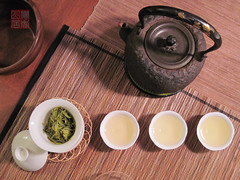

The taste is pretty decent as for a good green tea. It presented a little astringency which you will not experience with Anji White. Usually, astringency indicates the tea possesses less amino acid but more poly phenols. To me this is a good news, because more poly phenols means more EGCGs or the antioxidant element.
The spent leaves demonstrate the tea's specialty for which it is named: the pale greenish with a tone of ivory!
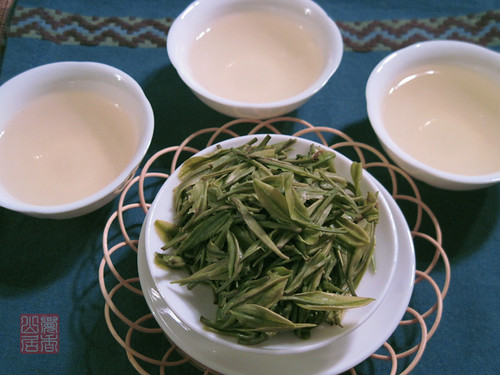
Notes
[1] The five types of tea are: Green Tea, White Tea, Yellow Tea, Oolong Tea (or Greenish Black), Black Tea.
[2] The supreme quality of White Tea is described in a Song Dynasty Tea Classic 《大觀茶論》.
